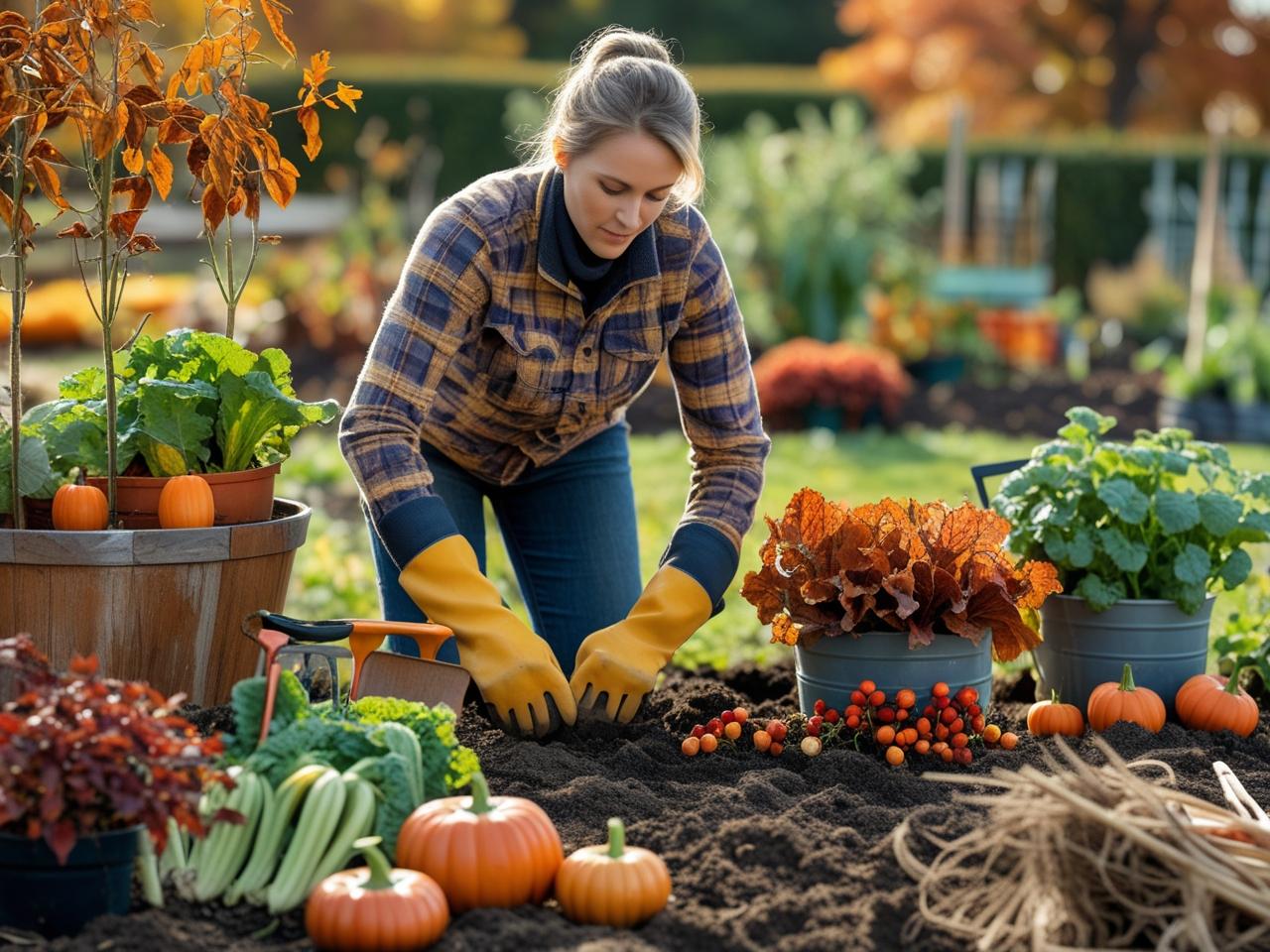Fall might bring cooler temperatures and shorter days, but it’s a fantastic season for planting and gardening. The crisp air and moist soil create ideal conditions for many vegetables, flowers, and bulbs. Moreover, a fall garden can yield fresh produce well into the colder months while preparing your outdoor space for springtime blooms. With the right choices and care, gardening in autumn is both rewarding and practical.
Why Fall Gardening Is Important
Fall gardening offers several advantages:
- Warmer soil, cooler air – Soil still holds warmth from summer, helping seeds establish; cooler air reduces stress on seedlings.
- Fewer pests and weeds – Many insects and weeds fade as temperatures drop, reducing maintenance.
- Stronger plant development – Root systems grow more vigorously in fall, leading to healthier plants in spring.
- Extended harvest – Cold-tolerant crops like kale and spinach taste sweeter after frost.
If planned right, your garden can be productive year-round, without long breaks when there’s nothing to tend.
What to Plant in Fall
Cool-Season Vegetables
Fall is the perfect time for leafy greens, roots, and brassicas. Consider adding:
- Kale, spinach, Swiss chard, and arugula – Sow seeds 6 to 8 weeks before the first expected freeze. These greens thrive in cooler weather and can withstand light frost.
- Broccoli, cauliflower, cabbage, and Brussels sprouts – Start seeds indoors or transplant seedlings 8 to 12 weeks before frost dates. These benefit from cool temperatures.
- Carrots, beets, radishes, and turnips – Direct-sow seeds; root vegetables develop crisp texture in autumn’s cool soil.
- Garlic – Plant individual cloves in October, about 4 to 6 weeks before the ground freezes. Mulch heavily—harvest next summer.
- Peas (in mild climates) – Fall-sown varieties can produce early spring harvests, though many prefer spring planting.
Fall Flowers and Bulbs
Brighten your garden with autumn blooms and spring bulbs:
- Mums (chrysanthemums) – Hardy and colorful, perfect for patios and borders.
- Asters – Blooming in blues, purples, and whites, they extend garden color into late autumn.
- Spring bulbs – Plant daffodils, tulips, hyacinths, and crocus in the fall for early spring blooms.
Cover Crops and Perennials
- Cover crops like clover and winter rye improve soil, prevent erosion, and fix nitrogen.
- Perennials such as hostas, daylilies, lavender, and ornamental grasses can be planted in fall when temperatures are mild and rainfall helps establish roots.
Preparing the Garden for Fall
Clear and Clean
Remove spent plants, dead foliage, and weeds to reduce disease and pest risks. Compost healthy debris and discard any diseased plant material far from garden beds.
Test and Amend Soil
Test pH and nutrient levels using a simple kit. Add compost or organic matter to improve structure and fertility, helping fall and spring plants thrive.
Add Mulch
Apply 2 to 3 inches of organic mulch like straw or shredded leaves. Mulch moderates soil temperature, conserves moisture, and supports earthworms.
Planting Tips for Autumn
- Timing matters – Use your local last-frost calendar to determine optimal planting dates 6 to 12 weeks before expected freeze.
- Sow in blocks – Grouping crops in blocks (instead of rows) helps soil retain heat and protects tender plants.
- Cover seedlings at night – Use horticultural fleece, cloches, or even old sheets to shield young plants from frost.
- Water wisely – Fall rains help seedlings establish. Water during dry spells, but reduce as frosts approach.
Caring for Your Fall Garden
Watering
Water less frequently but more deeply than in summer. Autumn rain often meets plant needs, but during dry spells, steady moisture helps roots grow deeply and evenly.
Fertilizing
Use a slow-release organic fertilizer when planting. Avoid high-nitrogen feeds—fall crops appreciate balanced fertilization to support root growth without excessive leafiness.
Pest and Disease Management
- Watch for pests like aphids and slugs that remain active in mild fall weather. Use hand-picking or neem oil for control.
- Prevent disease with good air circulation and clean plant debris.
- Rotate crops to reduce disease and pest build-up.
Apply Season Extenders
As nights get colder, protect tender plants:
- Floating row covers and frost cloths help plants endure temperatures just below freezing.
- Cold frames or cloches make a mini-greenhouse that protects young crops and warms the soil.
Overwintering Your Garden
Take steps to set yourself up for spring success:
Extend Harvest
Use covers overnight or in containers to continue harvesting kale, spinach, carrots, and beets into early winter.
Plant Cover Crops
Sow rye, clover, or vetch in empty beds to improve soil and suppress weeds.
Protect Perennials
Apply heavy mulch around perennials’ crowns to insulate roots. This helps them emerge early and strong in spring.
Clean Tools and Store
Sharpen pruners, clean tools, and store them in a dry place. Clear out hoses to prevent freeze damage.
Transition to Winter
As frosts become more frequent and nights grow colder, do the following:
- Pull up spent annuals and green manure crops.
- Add compost to garden beds.
- Mulch beds after ground freezes to insulate the soil.
- Enjoy the quiet—winter gives your soil a rest before spring’s energy returns.
Final Thoughts
Fall is an underappreciated but powerful season for gardening. With cooler temperatures, productive planting options, and minimal pest pressure, it’s the season to build strong plantings and rich soil for the year ahead. By choosing the right crops and using thoughtful fall care, you can extend your harvest, beautify your landscape, and set your garden up for spring success—all while enjoying the crisp, refreshing vibes of autumn gardening.

